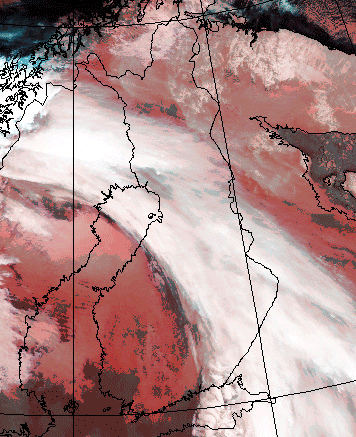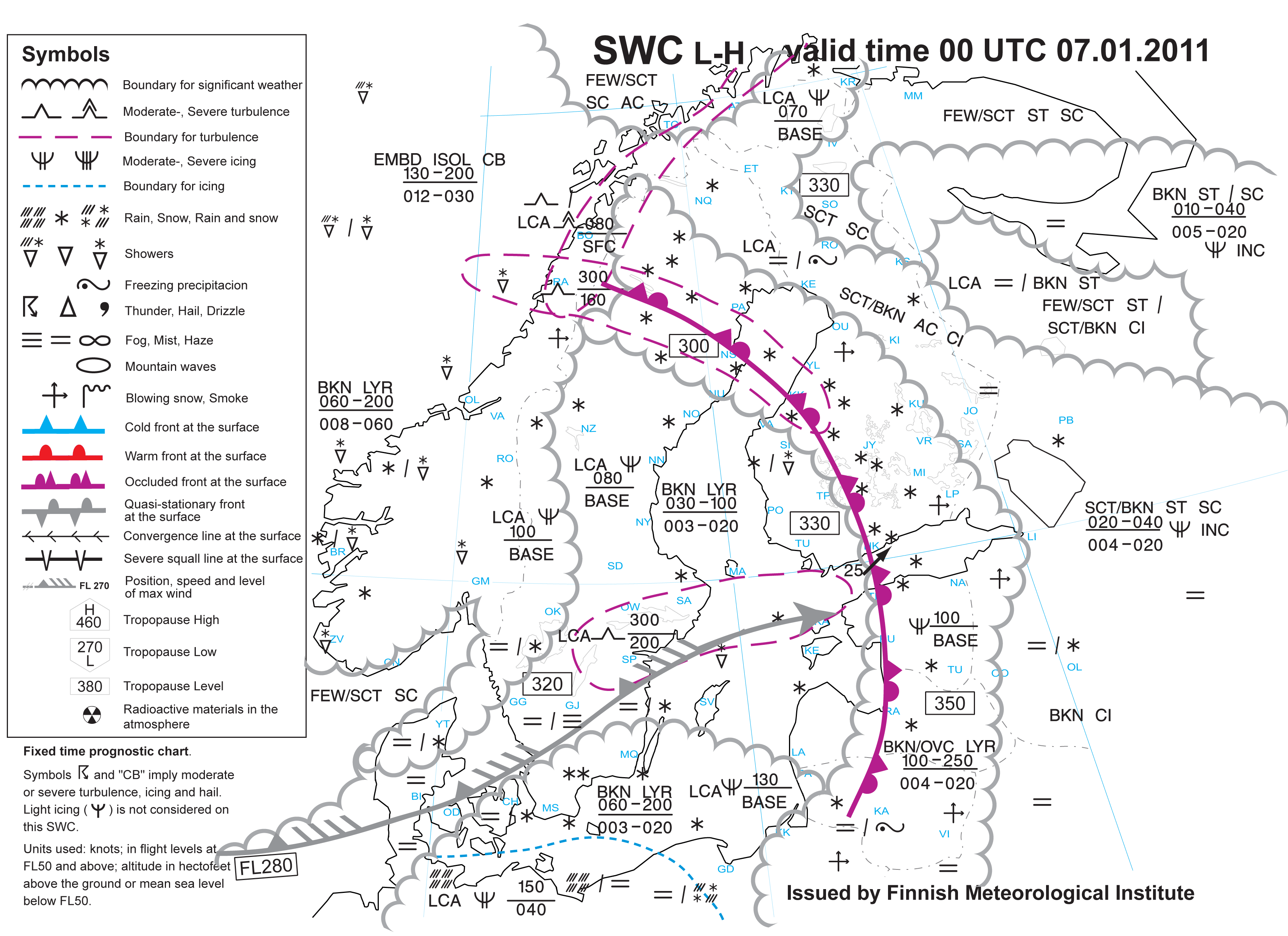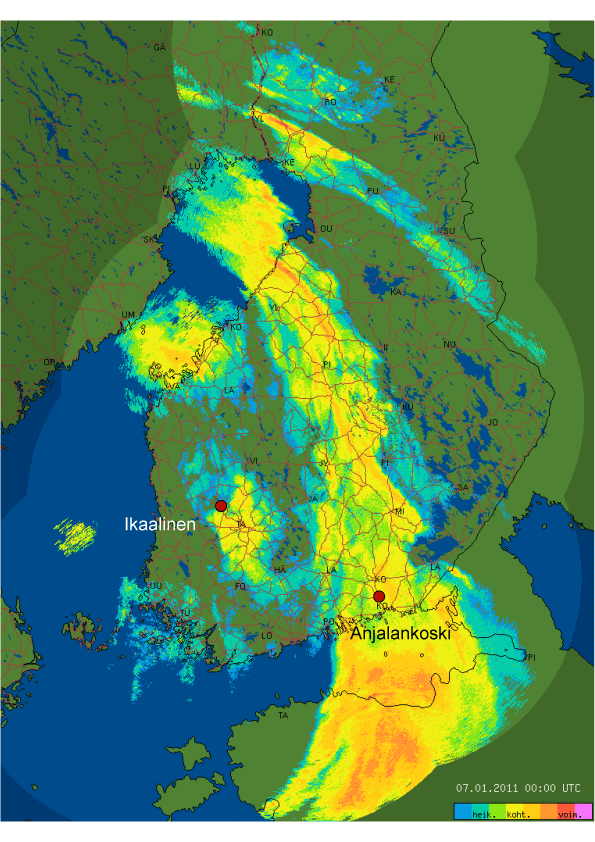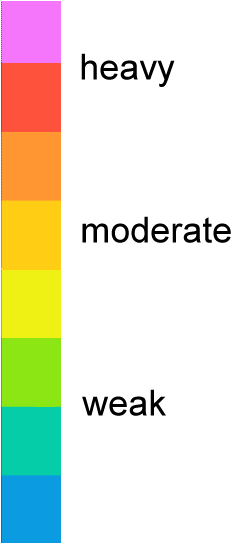Exercise
In this exercise your task is to find possible icing conditions in a part of Northern Europe on the 7th of January 2011 around 00 UTC. The exercise contains four parts: knowledge of cloud phases, soundings, satellite images and radar images.
The synoptical situation on the 7th January 2011 at 00 UTC is such that a warm occlusion reaching from Northern Sweden through Western Finland to the Baltic Countries is moving slowly northwards:
Fig. 6.1. AVHRR 345-combination on 7th January 2011 at 00.31 UTC.
Fig. 6.2. Significant weather chart 7th January 2011 for 00 UTC.
1. Knowledge of the cloud phases
In this exercise you define different types of clouds by sorting them according to the temperature and dew point depression.
2. Soundings
In this exercise you will examine the cloudiness in five places. From the IR image in fig. 6.3. you can roughly see the height of the clouds, but the soundings reveal the cloudiness in more detail. The locations of the soundings are marked with a red cicrle. When you click over a circle, the corresponding sounding appears.
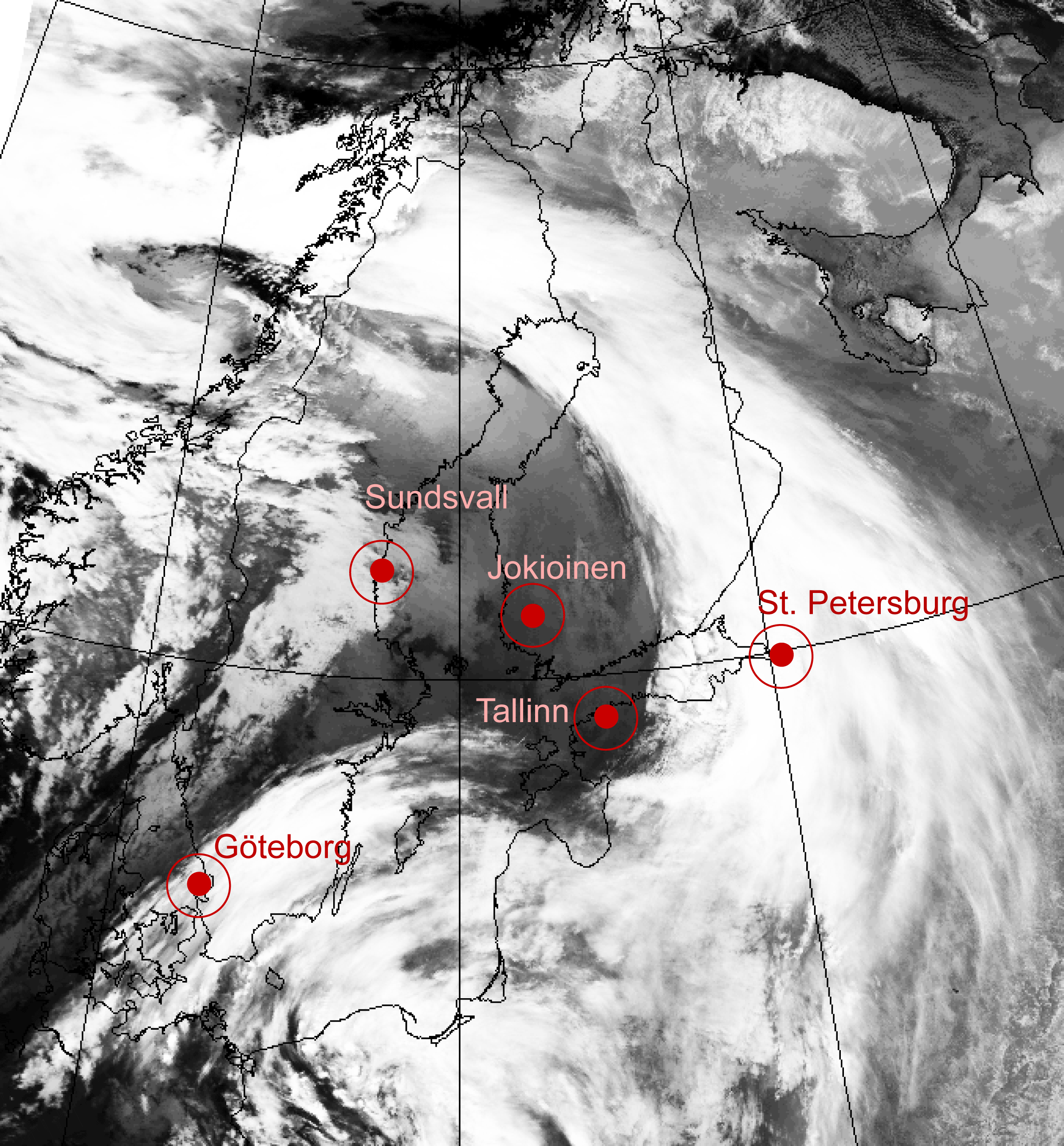
Fig. 6.3. Sounding locations. Click on the location to see the radiosounding.
Fill in the following tables with the help of the data revealed from the soundings. Generally, the classification of clouds according to their height depends on the latitude, clouds generally forming at lower levels in high latitudes than lower ones, but in this case a rule of thumb would be as follows:
- low clouds: ground – 850 hPa
- middle clouds: 850 – 600 hPa
- high clouds: higher than 600 hPa
Determine the heights of the clouds in hPa's; if there are non, choose 'no cloud' in the drop-down box. When you have finished a sounding, click the 'Check' button on the right-hand side:
Now look at the temperatures of the clouds found in the previous task and observe the following table:
Look at the temperatures of the clouds and try to figure types of clouds that are present on each location:
Now, check out the third table saying in which locations icing is probable, and what are the cloud base and top heights (in hPa) and their temperatures (in Celsius degrees):
3. Satellite images
In the following image you can observe clouds with different water phases. Select the correct answers.
4. Radar images
In this image, which is a combination of several radars, you see the CAPPI echoes and the locations of the Ikaalinen and Anjalankoski radars. After that, there are CAPPI and HCLASS images from both radars. With this information, you should choose the areas where supercooled water might be present.
Fig.6.7. Combination image of Finnish radars 7th Jan. 2011 00.00 UTC, with color scale
Now, select the SuperCooled Rain Drop mark (SCRD) over those areas where you would expect supercooled rain drops.
